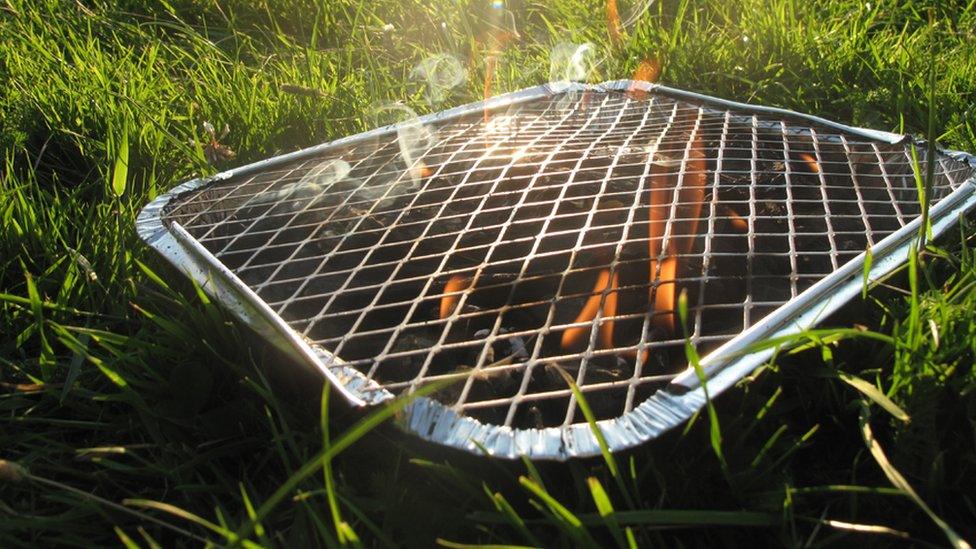In pictures: England's bare lawns and parched parks
- Published
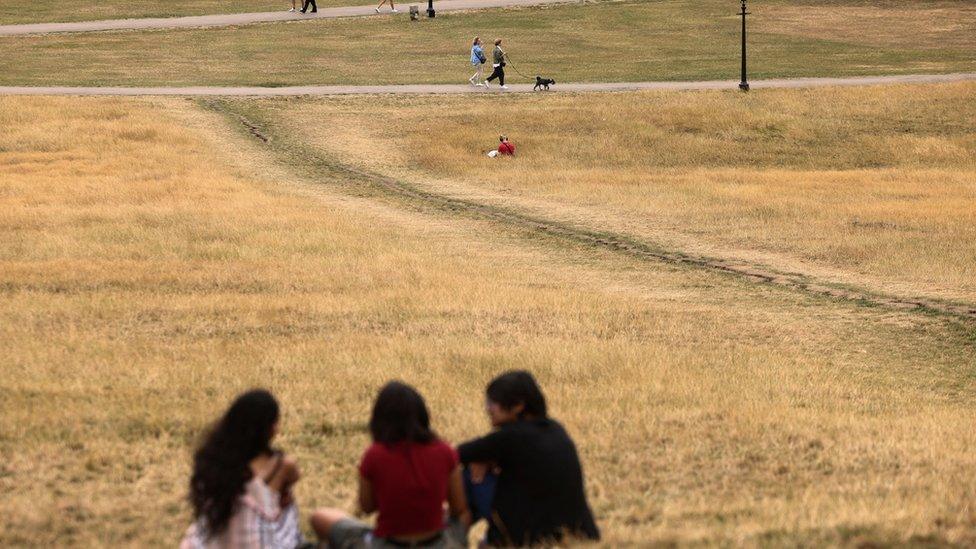
Dry ground and dead grass on Primrose Hill, London
Recent weeks have brought record-breaking temperatures and the driest July England has seen for more than 80 years.
And it isn't only us humans who have been suffering the effects - the country's grass and plant life have also been withering in the heat.
Northern areas are now getting some rain, but southern England isn't expected to see any until at least the end of next week. Hosepipe bans are now being introduced in some places, for the first time this year.
Pictures show the toll the heatwave is taking on the country's lawns, fields, and parks.
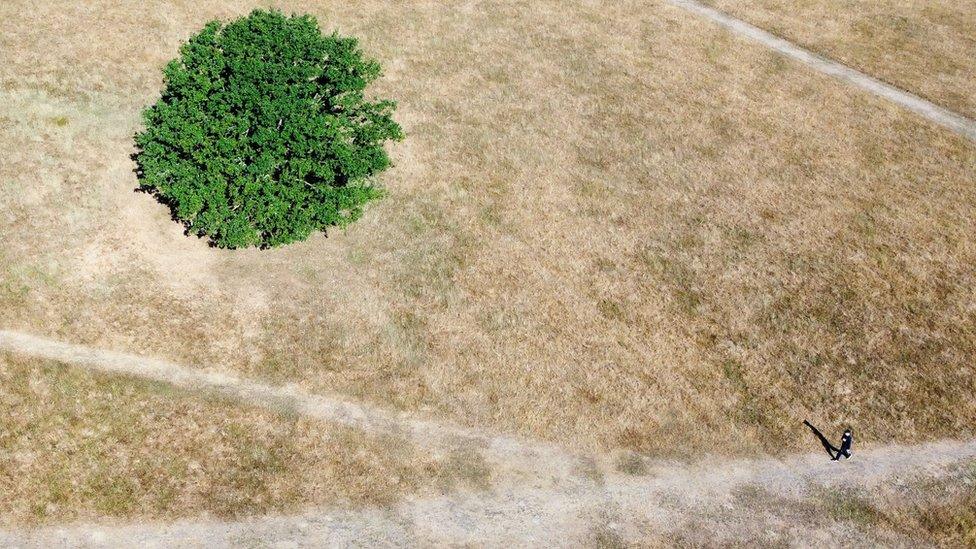
Dried out grass in Richmond Park, London
In London's Richmond Park, there is dried-out ground and dead grass - as well as a warning to the public not to drop cigarettes or light barbecues, because of the risk of fire.
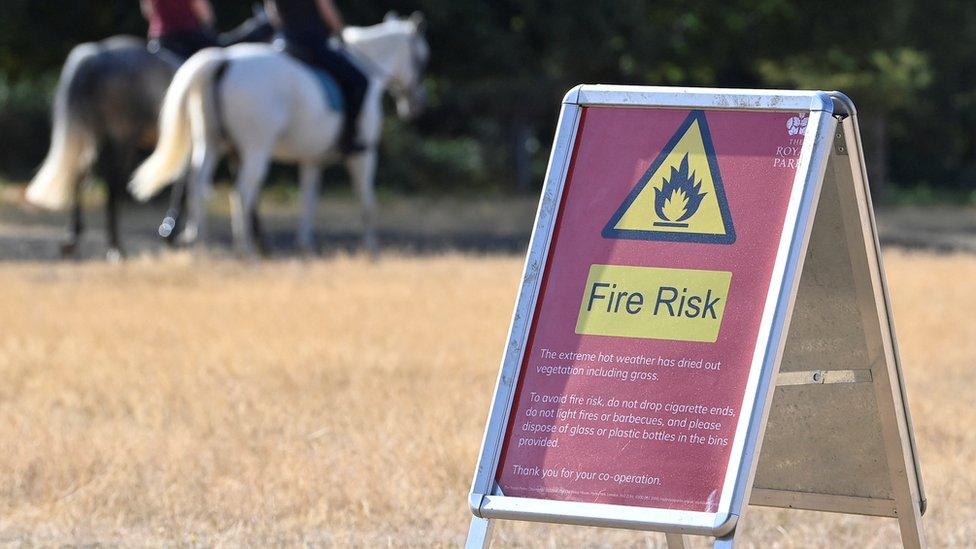
A sign in the park warns of the risk of fire
The heat has left some sites in the capital that are normally covered in manicured grass - including Westminster's Parliament Square - completely bare.
And the spot commonly recognised as the source of the River Thames, located near Cirencester, has also dried up for what is thought to be the first time.
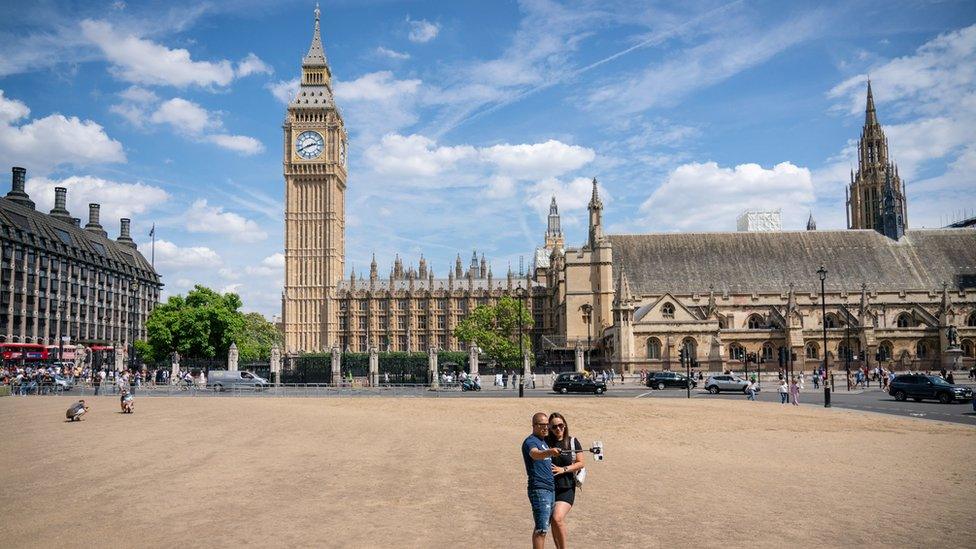
Parliament Square in Westminster has been left bare by the heat

Parched grass in front of the Old Royal Naval College in Greenwich, London
At Chatsworth House in Derbyshire, the temperatures revealed the remnants of a 17th Century garden design.
Aerial footage of the home's South Lawn showed straight paths and ornate swirls that previously formed walkways around the lawn.
The walkways were replanted in about 1730, but the shorter roots of the newer grass means it burns more quickly, creating a contrast with the older grass around it.
Aerial photos also show the impact of the heat on cricket fields and golf courses in southern England.
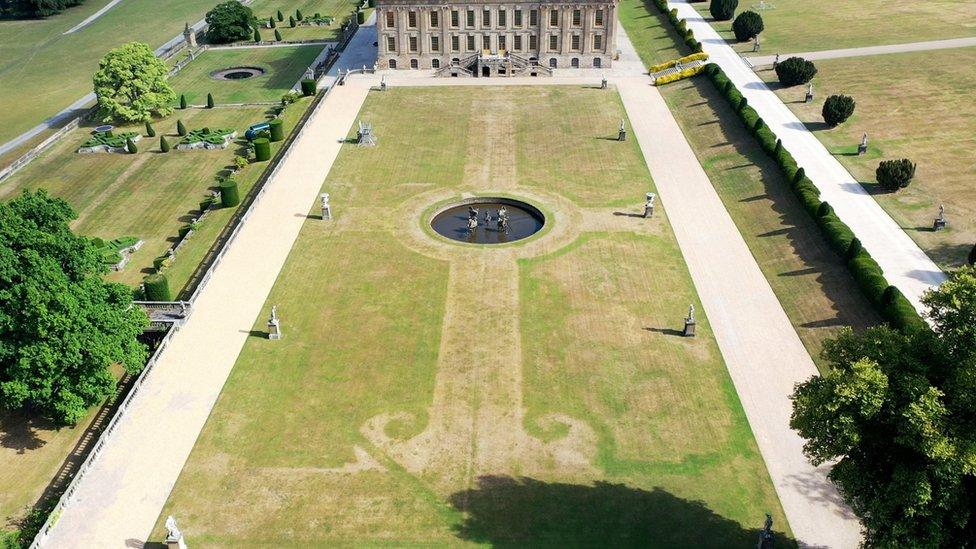
The remnants of a 17th-century garden are visible at Chatsworth House in Derbyshire after the grass dried out in the heat

A fire in a field in Kent came close to engulfing the Lenham Cross war memorial
Parts of northern England, North Wales, and Scotland are already seeing some showers again, with some areas set to get more rain over the weekend, but southern England is expected to remain dry until next Thursday at the earliest, according to BBC Weather's John Hutchinson.
Temperatures in the south are also set to rise next week and are likely to exceed 30C (86F) in parts.

This satellite image shared by NASA shows how the UK looked on 19 July, 2021
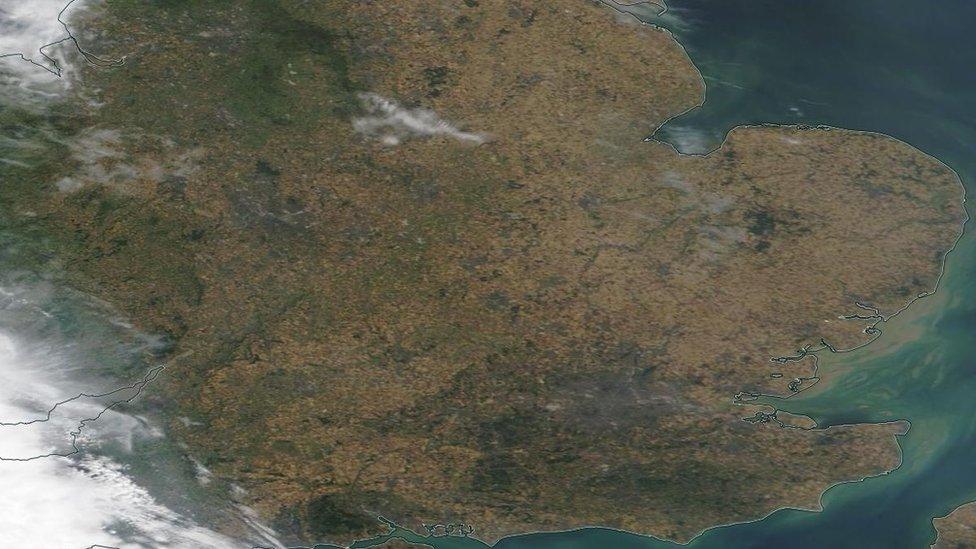
And this satellite image from one year later shows the impact the heatwave has had on the UK
A number of river beds have also dried up across the country, including in Gloucestershire and Greater Manchester.
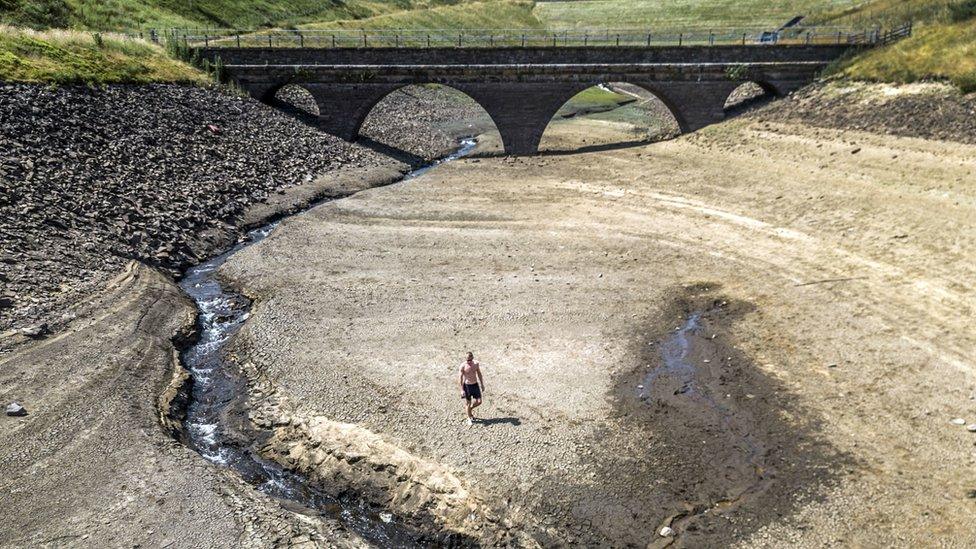
This tributary of the Dowry Reservoir, near Oldham, dried up in July
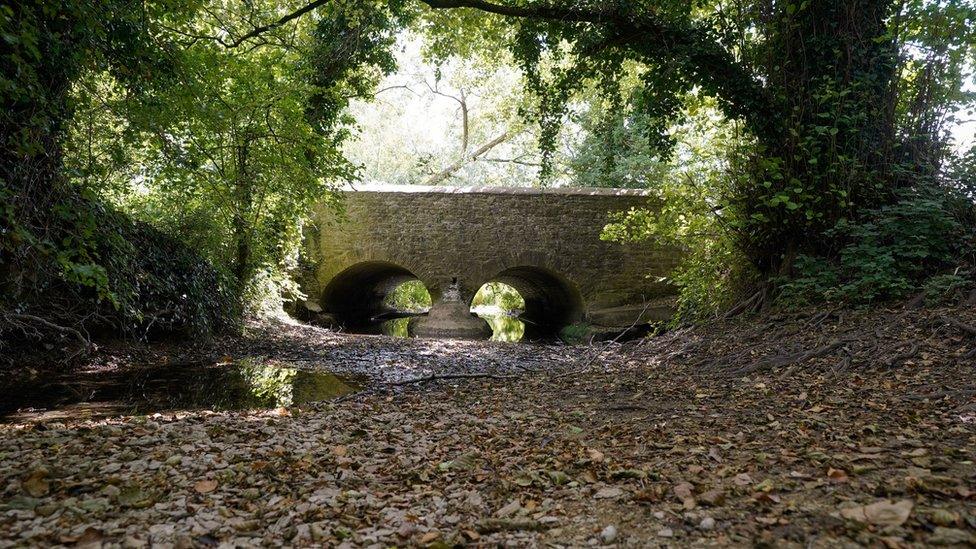
The bed of the River Thames near to Somerford Keynes in Gloucestershire
But don't worry if the grass in your garden is already looking worse for wear.
Unlike most plants, grass grows not from its outer tips but from the base, near the roots, making it easier for it to grow back if the blades are cut or scorched.
Provided the roots are still healthy, your grass should revive before long.
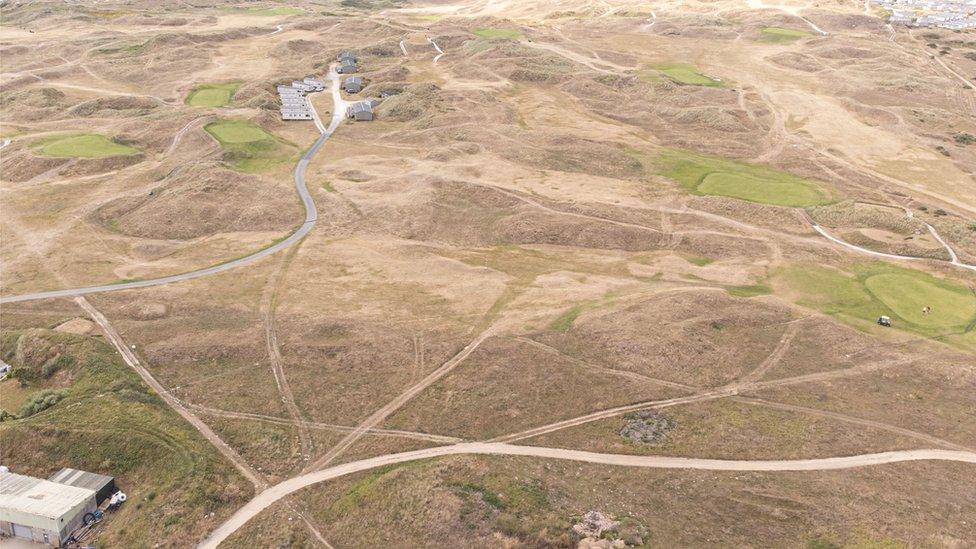
A dry golf course near Perranporth, Cornwall in July
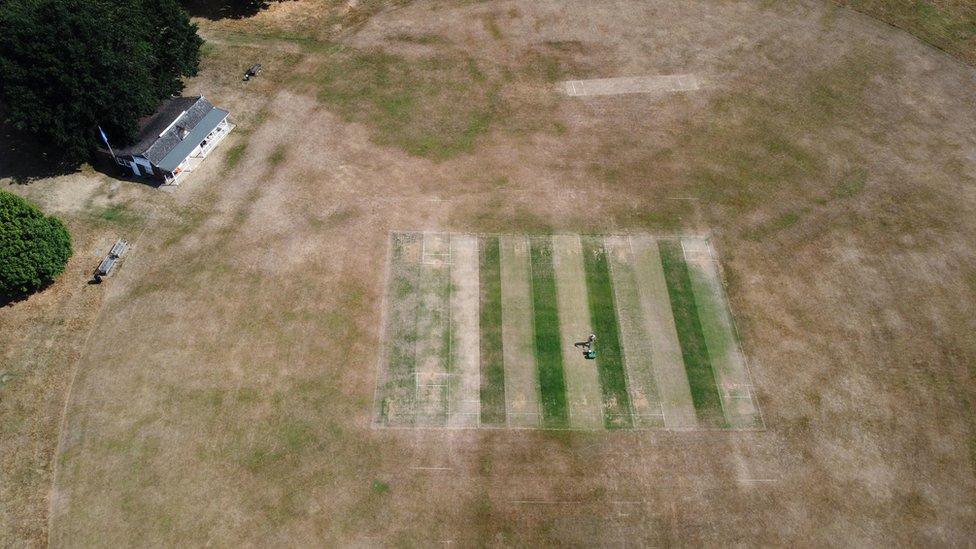
A dried out cricket field at Boughton and Eastwell Cricket Club in Ashford, Kent

The greens of a golf course near New Romney, Kent seen dried out
Related topics
- Published5 August 2022
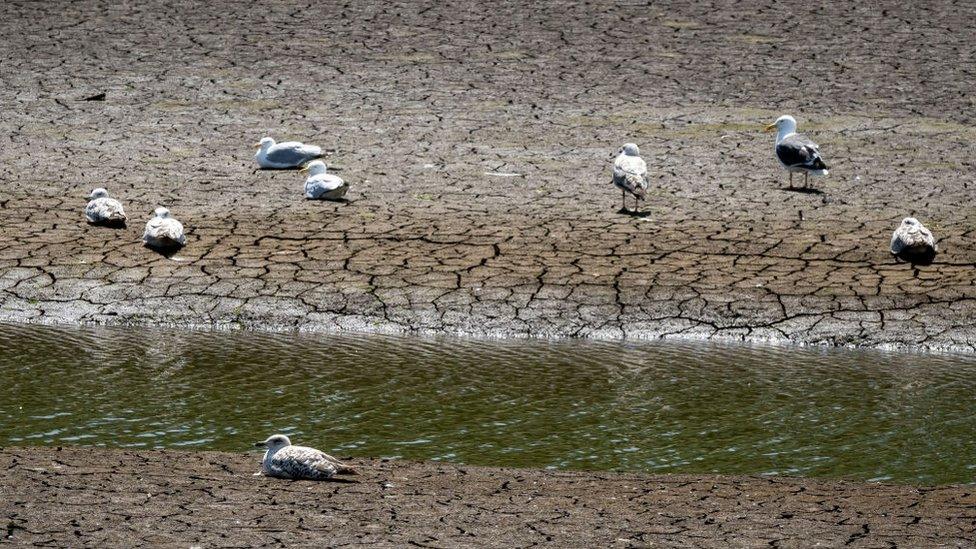
- Published5 August 2022
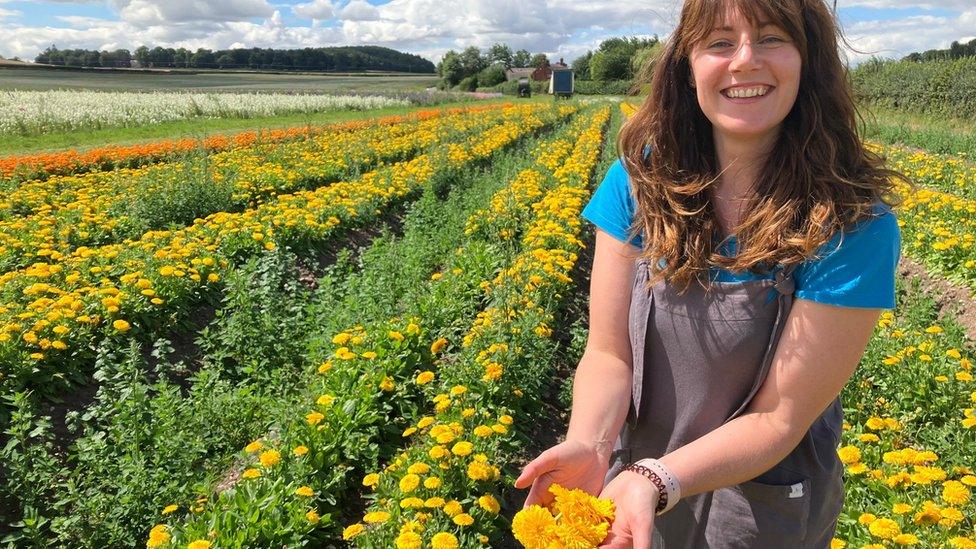
- Published4 August 2022
